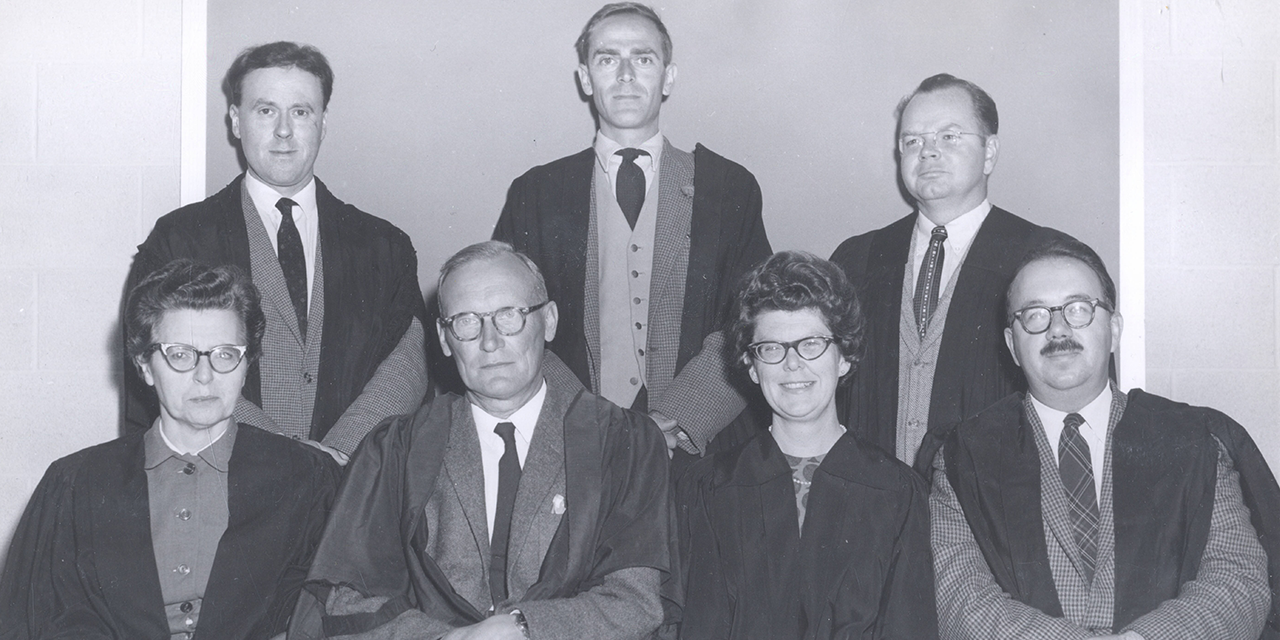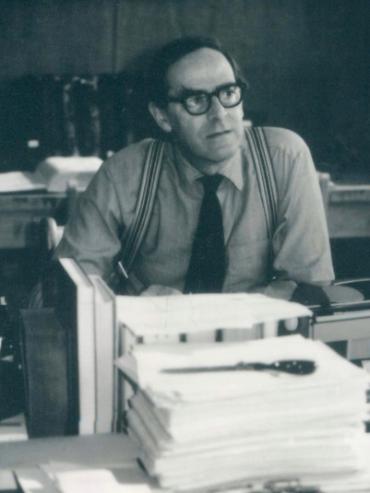The story of George Story
In the 1950s — long before Newfoundland phrases were proudly emblazoned on T-shirts, mementos and chocolate-bar wrappers — Dr. George Story commenced work on a glossary of Newfoundland words.
The glossary grew. And in 1982, after 20 years of meticulous research, the groundbreaking Dictionary of Newfoundland English was published, co-edited by Drs. Story, W.J. Kirwin and J.D.A. Widdowson.
The dictionary includes 11, 000 entries. It provides definitions and includes quotations culled from historical books, newspapers and magazines to show the words in context.
At the time of its publication, Newfoundland English was still often subjected to ridicule and negative cultural stereotypes. But the dictionary revealed an authentic dialect rooted in history, a living language evolving over time that was a product of both necessity and creativity.
Today, the English spoken in Newfoundland and Labrador is celebrated for its originality and imaginative qualities. This resurgence might not have been possible without the glossary of words Dr. Story began collecting back in the mid-1950s.
Dr. Story graduated from Memorial University College in 1948. He went on to complete his undergraduate degree at McGill where he was awarded a Rhodes Scholarship.
After completing his doctorate at Oxford, he returned to St. John’s and joined Memorial’s Department of English in 1954.

Memorial’s Department of English Language and Literature faculty in 1961. (Front row, left to right): Helena Frecker, Ronald Seary, Allison O'Reilly Feder, David G. Pitt. (Back, left to right): Alastair Macdonald, George Story, William Kirwin. Photo by Frank Kennedy from Memorial University Archives.
Despite being described as “quiet” in the 1948 Cap and Gown, the Memorial University College yearbook, Dr. Story would go on to become one of Memorial’s most memorable public orators.
He won the Canada Council’s prestigious Molson Prize in 1978 for his work in lexicography and was named Memorial’s Henrietta Harvey Professor of English the following year. In 1988, he was named to the Order of Canada.
Beyond his work as a scholar, Dr. Story was also a committed urban activist. His work with the Newfoundland Historic Trust and the Historical Society led to the preservation of some of the most important historical structures in the province.
It seems fitting that a person named Story would show us that communities need narratives—narratives with a tangible sense of continuity between the past and the present if we are to progress our most treasured values forward.
In his efforts to uncover the historical import of the province’s dialect and architecture, he taught us that the past is alive in language and the buildings we pass every day.
Dr. George Story died on May 9, 1994, just a few days before he was awarded an honorary degree and the title of professor emeritus by Memorial University.
At convocation that year, his friend and colleague, Dr. Shane O’Dea, summarized Dr. Story’s contribution to preserving the province’s lexicon and built heritage.
Dr. O’Dea drew inspiration from a famous inscription found on the walls of St. Paul’s Cathedral. “If it is Story’s monument you seek,” he said, “look about you.”
